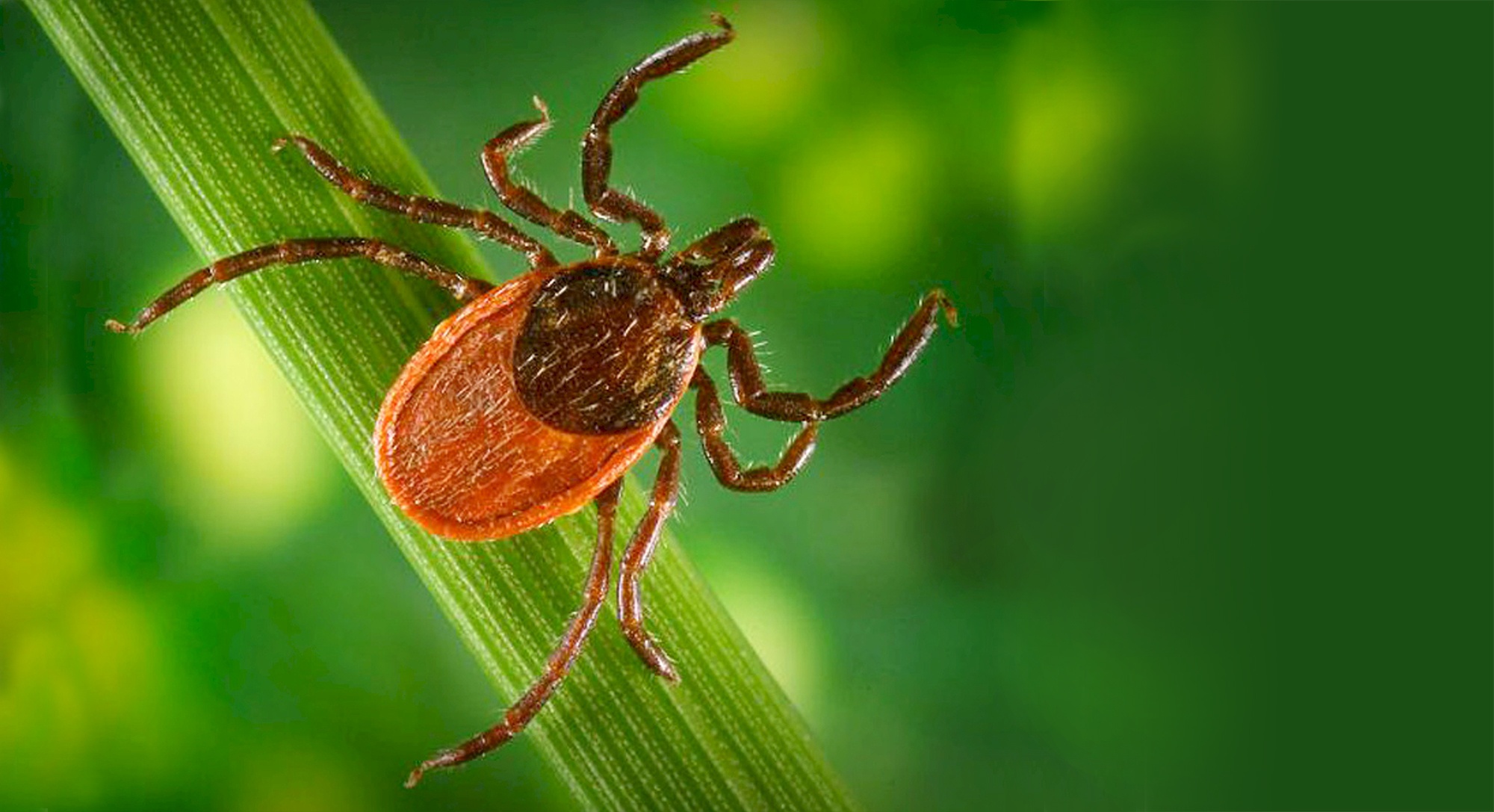What you need to know about Lyme disease and ticks.
Lyme disease is a bacterial infection referred to as a borreliosis (caused by many strain of Borrelia). Ticks are the notorious culprit of transmitting the disease to humans. Not all ticks will transmit Lyme disease, but there is no good tick. They are nasty little bugs who are a member of the arachnid family (8 legged) along with spiders and mites. Lyme borreliosis is an infection caused by many strains of the Lyme bacteria.
In Canada, and throughout North America, the ticks that transmit Lyme disease are potentially found anywhere that our friendly migratory birds fly, such as robins, wrens, sparrows and other passerine birds. It is these birds who transport ticks everywhere and anywhere in the hundreds of millions each season. These birds not only move infected ticks from highly infected areas to new areas randomly, they also carry the disease in their blood to infect any previously uninfected ticks as the ticks feed on the bird during the ride. This is a very efficient process as a tick can go from a highly infected region of New York state, Wisconsin, or California, to cities, parks, campgrounds, and backyards of Canada within 48 hours.
There is no area of Canada (North America) where you have zero risk of Lyme disease.
It is important to recognize symptoms of Lyme disease. Less than 30% of people will get the over emphasized target rash which has been improperly imprinted as the hallmark of Lyme disease. Most people get no rash at all and of those that do, only 9 % take the “bull’s eye” or target form. If you do get that rash and it expands over 5 cm in diameter, your doctor must treat you for Lyme disease. Many people may get flu-like symptoms outside of flu season, when others in their area are not getting ‘the flu’. That should be a red flag. Some people only develop symptoms weeks, months, or years down the road. Human tests for Lyme disease in Canada are unreliable. A negative result tells you nothing about whether you are infected with Lyme disease or not. An experienced medical professional can make a clinical diagnosis that does not rely upon the tests in Canada. Most people do not recall having a tick on them. They are very small, about the size of a poppy seed.
Myth: All Lyme victims develop a “bull’s eye” rash.
Truth: Although rashes are fairly common, only 30% of Lyme patients report experiencing a rash, and only 9% develop the classic “bull’s eye” rash
Symptoms in late stage Lyme disease can be many, involving every system of the body. Hallmark symptoms can be fatigue combined with numbness and tingling, joint or muscle pain, weakness, brain fog, and a simple sense of unwellness that has changed your day-to-day life.
Having pointed out the risk and symptoms, there are measures you can take to prevent acquiring the infection. When enjoying nature on your RV adventure be tick aware. If hiking, stay in the centre of the path and do not brush up against the tall grass or brush along the edges of the trail. Ticks can be found in leaf/grass litter on the floor of the outdoors, or about knee high on tall grass or brush. Gathering wood or sitting on deadfall trees to take a rest can increase your risk of exposure.
Wearing light coloured clothing will help you spot ticks. If hiking, have the person behind you look for ticks on you, then reverse the lead so you can look for ticks on the other individual. Wear long pants and tape points of entry such as ankles and wrists. Secure the waist and neck. Use products that contain Deet or other repellants to spray your clothing and exposed skin.
Myth: Lyme-infected ticks only live in rural parts of Canada.
Truth: Lyme disease is present in most of Canada. Although Lyme infection is more common in rural areas, residents that live in urban areas are also at risk for infection. It is the migratory birds, robins and song sparrows etc. that transport this disease each season.
Take your clothes off immediately upon your return and put them in the “dryer”, not washing machine, for 15 minutes on heat. That will kill any ticks that came with you. If your RV or campground does not have a dryer, shake out clothing thoroughly and inspect before bringing indoors. Shower and inspect your full body. If possible, have others check your hard to see private body parts. Children must be checked thoroughly, hair and private parts. Pets must be checked thoroughly.
Have proper tick removal instructions and tools on hand. A tick in the ear canal requires a different tool than a tick on one’s back.
Remember, no tick is a good tick as they carry many diseases other than Lyme disease. Consult a medical professional if you find a tick attached. Consult the Canadian Lyme Disease Foundation and their experts for advice and our tick removal kits. We are a registered not-for-profit charity in Canada. www.canlyme.com
Jim Wilson
President and Founder
Canadian Lyme Disease Foundation
www.CanLyme.com
How to Remove a Tick
If a tick is removed within 24 hours, the chances of it transmitting Lyme disease or other infections are less.
Safe tick removal methods:
- Method 1: Intradermal Blister
- Method 2: Straw and Knot
- Method 3: Tweezers
- Method 4: Tick-Removal Tool/Kit
Not all tick removal methods are safe. Certain removal methods may increase your chances of contracting Lyme disease.
https://canlyme.com/lyme-prevention/tick-removal/
 10 Tips for High-Risk Areas
10 Tips for High-Risk Areas
- Use insect repellant with 20% DEET or higher on your skin and clothing. Carefully apply the repellent by hand to your face, neck, and ears – you don’t want DEET in your eyes or mouth! You may need to reapply DEET products after several hours.
- Apply permethrin to clothing, hiking boots, tents and camp chairs. Permethrin products should never be used on skin.
- Wear light-coloured clothing. You’ll have a better chance of seeing a dark tick crawling on you before it makes its way to your skin.
- Wear long pants with sneakers or hiking boots. Tuck your pant legs into your socks, and keep your shirt tucked into your waistband. In areas where ticks are abundant, you may even want to wrap duct tape around your ankles over the top of your socks.
- Outfit yourself in bug repellent apparel. Sporting goods stores often sell clothing that is pretreated with permethrin. The treatment lasts for up to 70 washes.
- Stay on the trail. Walk on designated trails, and avoid blazing your own through meadows or other high vegetation areas.
- Avoid tick-infested places. In some places, ticks may be too abundant to avoid, even with the best repellents and long pants. If you venture a few feet into a wooded area or field and find your legs covered with ticks, get out of there and remove all ticks!
- Be vigilant – do a daily tick check. Strip down and search all those places that ticks love to hide: in your hair, under your arms, between your legs, behind the knees, and even in your belly button.
- Put your clothes in the dryer, and tumble them on high heat. Research shows many ticks can make it through the washing machine, even when you wash in hot water. Most ticks will die during a cycle in the hot, dry air of your clothes dryer.
- Check your pets and your kids before letting them loose in the house. Ticks can drop off on carpets or furniture.






















